argentina
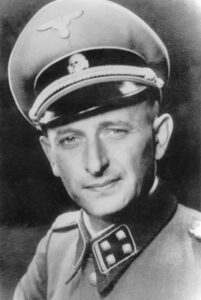 Following the end of World War II, many members of the Third Reich fled Germany, and relocated to Argentina this had all been planned as it became more and more clear that the Nazi Regime would not be successful. The ultimate plan was to lay low for a while, and then form a new Third Reich, or more likely the Fourth Reich. The main figures of the Third Reich were given new identities and smuggled out as soon as they could. It is unknown just exactly how many made it out, but files discovered in Argentina reveal the names of 12,000 Nazis who lived there in the 1930s, many of whom had Swiss bank accounts.
Following the end of World War II, many members of the Third Reich fled Germany, and relocated to Argentina this had all been planned as it became more and more clear that the Nazi Regime would not be successful. The ultimate plan was to lay low for a while, and then form a new Third Reich, or more likely the Fourth Reich. The main figures of the Third Reich were given new identities and smuggled out as soon as they could. It is unknown just exactly how many made it out, but files discovered in Argentina reveal the names of 12,000 Nazis who lived there in the 1930s, many of whom had Swiss bank accounts.
The Jewish people were understandably furious at not only the atrocities that their people had been subjected to, but the fact that with the escape, the fact is that many of the Nazi criminals would never answer for what they did, much less be punished for those atrocities. Nevertheless, the initial intent was to seek justice.
So, on December 13, 1949, Mossad was established. It later became the Institute for Intelligence and Special Operations. While Mossad has many uses today, it was primarily designed to go out and get the war criminals who were in hiding in Argentina and other parts of South America,  where there was no extradition. Mossad planned to go in without authorization, kidnap the Nazi war criminals, and take them to Israel to stand trial.
where there was no extradition. Mossad planned to go in without authorization, kidnap the Nazi war criminals, and take them to Israel to stand trial.
Some people may assume that Israel’s vaunted Mossad intelligence service devoted a great deal of energy to hunting for Nazis to seek revenge for the Holocaust. That was not the case. The desire to bring the murderers of Jews to justice was not deemed as important to Israel’s leaders in the early years of statehood as more pressing issues directly effecting the nation’s security. One of those issues, was preventing Nazis who went to Egypt from aiding in Nasser’s development of missile technology.
There were a few of the war criminals that the Mossad brought to Justice. One well known criminal was Adolf Eichmann, the man who engineered the Final Solution. His “contribution” to the atrocity that was the Holocaust was one of the most heinous. In 1960, Mossad tracked Eighmann to his home in Argentina, kidnapped him, and brought 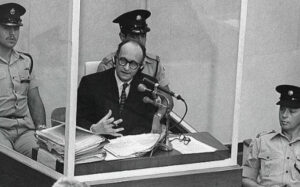 him to trial in Israel. He was convicted of war crimes and was actually the only person ever sentenced to death in Israel. The Argentinian government was furious because their no extradition policy was violated by Mossad. The immediately demanded that Israel return Eichmann, and then asked for reparations for Eichmann’s seizure by Mossad agents in Buenos Aires. Nevertheless, on August 2, 1969 the dispute was resolved by Israel keeping Eichmann, but acknowledging that Argentina’s fundamental rights had been infringed upon. No further repercussions were given.
him to trial in Israel. He was convicted of war crimes and was actually the only person ever sentenced to death in Israel. The Argentinian government was furious because their no extradition policy was violated by Mossad. The immediately demanded that Israel return Eichmann, and then asked for reparations for Eichmann’s seizure by Mossad agents in Buenos Aires. Nevertheless, on August 2, 1969 the dispute was resolved by Israel keeping Eichmann, but acknowledging that Argentina’s fundamental rights had been infringed upon. No further repercussions were given.
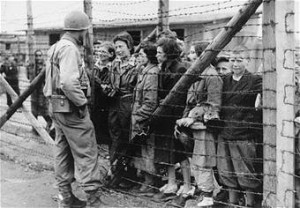 After years of being oppressed, starved, beaten, murdered, and used for experimentation, the Jewish people decided that it was their right to avenge their dead. The Nuremburg Trials were supposed to do all that, but so many of the Nazis had fled the country to escape the sentences they deserved, and once out of the country, it was almost impossible to get them back to face those sentences. In the late 1940s, under Juan Domingo Peron’s leadership (October 17, 1945 to July 1, 1974), the government secretly allowed entry of a number of war criminals fleeing Europe after Nazi Germany’s collapse, as part of the infamous ratlines. The number of Nazi fugitives that fled to Argentina surpassed 300, and included notorious war criminals such as Erich Priebke, Martin Bormann, Joseph Mengele, Eduard Roschmann, Josef Schwammberger, Walter Kutschmann, Otto Skorzeny and Holocaust administrator Adolf Eichmann, among others. In May 1960, Eichmann was kidnapped in Argentina by the Israeli Mossad and brought to trial in Israel. He was executed in 1962. At the time, Argentina condemned the Israeli government for abducting Eichmann, leading to a diplomatic spat between the nations.
After years of being oppressed, starved, beaten, murdered, and used for experimentation, the Jewish people decided that it was their right to avenge their dead. The Nuremburg Trials were supposed to do all that, but so many of the Nazis had fled the country to escape the sentences they deserved, and once out of the country, it was almost impossible to get them back to face those sentences. In the late 1940s, under Juan Domingo Peron’s leadership (October 17, 1945 to July 1, 1974), the government secretly allowed entry of a number of war criminals fleeing Europe after Nazi Germany’s collapse, as part of the infamous ratlines. The number of Nazi fugitives that fled to Argentina surpassed 300, and included notorious war criminals such as Erich Priebke, Martin Bormann, Joseph Mengele, Eduard Roschmann, Josef Schwammberger, Walter Kutschmann, Otto Skorzeny and Holocaust administrator Adolf Eichmann, among others. In May 1960, Eichmann was kidnapped in Argentina by the Israeli Mossad and brought to trial in Israel. He was executed in 1962. At the time, Argentina condemned the Israeli government for abducting Eichmann, leading to a diplomatic spat between the nations.
There was a financial incentive for Argentina to accept these war criminals, and they needed to provide a safe haven for them. Wealthy Germans and Argentine businessmen of German descent were willing to pay the way for escaping Nazis. The initial plan of the fleeing Nazis was to regroup, lay low for a while, and then come back with a vengeance. The Holocaust years had been very profitable for the Nazis. Nazi leaders had plundered untold millions from the Jews they murdered and some of that money accompanied them to Argentina…meaning the Argentine economy was helped by the war criminals…another incentive to help them hide out.
Some of the smarter Nazi officers and collaborators saw the writing on the wall as early as 1943 and began hiding gold, money, valuables, paintings, and more. They often moved their plunder to Switzerland. Ante Pavelic and his cabal of close advisors had several chests full of gold, jewelry, and art they had stolen from their Jewish and Serbian victims. These riches eased their passage to Argentina considerably. Disappearing, even in 1945 was not an easy matter, but if one had money, it was far more possible. The war criminals even paid off British officers to let them through Allied lines…a treasonous act for which those British officers should have 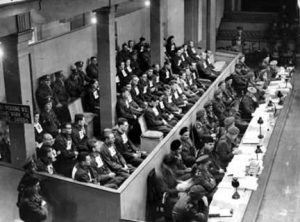 also been prosecuted and hung. Sometimes the corruption in government and military entities, even those who are supposed to be on the side of good, is absolutely astounding.
also been prosecuted and hung. Sometimes the corruption in government and military entities, even those who are supposed to be on the side of good, is absolutely astounding.
After the World War II, and the release of the surviving Jews, the Nuremburg Trials convicted these evil monsters, but many of them were gone before their sentence could be carried out. Enter the Nokmim, a group of Jewish men, also referred to as The Avengers or the Jewish Avengers. These men were a Jewish partisan militia, formed by Abba Kovner and his lieutenants Vitka Kempner and Rozka Korczak from the surviving remnants of the United Partisan Organization (Fareynikte Partizaner Organizatsye), which operated in Lithuania under Soviet command. Elements of the Nokmim collaborated with veterans of the Jewish brigade in British Palestine to form a new organization called Nakam, a group of assassins that targeted Nazi war criminals with the aim of avenging the Holocaust. The name comes from the phrase (Dam Yehudi Nakam – “Jewish Blood Will Be Avenged”) (the acronym DIN means “judgement”).
The Nakam (“vengeance”) Group was the most extremist group. They numbered around 60 Jews who were former Partisans, as well as other Jews who survived the Holocaust. This group was not about to let these men get away with all the atrocities they put their Jewish captives through, and then just walk away without punishment…not if they could help it. The group arrived in Germany after the war in order to conduct more complicated and fatal vengeance operations. Their ultimate purpose was to carry out an operation that would cause a broad international response…a warning, if you will, to anyone who might consider trying to harm Jews again, as the Nazis had. They needed to show the world that they would never be treated in such a way again. They would fight back…every time. Notables among the Hanakam group were Abba Kovner, Yitzhak Avidav, and Bezalel Michaeli. The group attempted a couple of mass poisonings, the first of the water supplies of Munich, Berlin, Weimar, Nuremberg and Hamburg, which failed when the poison had to be thrown overboard on a ship when Kovner was discovered to be carrying forges documents. The other attempt was with 3,000 loaves of bread painted with diluted arsenic, headed for 15,000 German POWs from the Langwasser internment camp near Nuremberg. The camp was under US authority. On April 23, 1946, it was reported that 2,283 German prisoners of war had fallen ill from poisoning, with 207 hospitalized and seriously ill. According to Harmatz, 300 to 400 Germans died. He said this “was nothing compared with what we really wanted to do.” A 2016 report by the Associated Press countered that the operation ultimately caused no known deaths, despite documents obtained through a Freedom of Information Act request to the National Archives and Records Administration 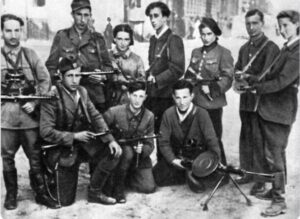 stating the arsenic found in the bakery was enough to kill approximately 60,000 persons. Apparently, the arsenic was spread too thin to be lethal.
stating the arsenic found in the bakery was enough to kill approximately 60,000 persons. Apparently, the arsenic was spread too thin to be lethal.
It’s hard to say just how much information is correct and how much is incorrect. I suppose it depends on who is reporting, and how accurately they want to report what they have. Propaganda in any war runs rampant, so we will likely never know. Records can and do go missing, especially when someone wants to disprove their enemies. Whether so many people died by poisoning or not, the Nokmim and the spin-off Nakam brought vengeance on many of the Nazis who would have escaped justice without them.
 In 1998, two Argentine mountaineers climbing Mount Tupungato, which is about 60 miles west-southwest of Mendoza, and about 50 miles east of Santiago, made a strange discovery emerging from the glacial ice. Upon inspection, the “discovery” turned out to be the wreckage of a Rolls-Royce Merlin aircraft engine, along with twisted pieces of metal and shreds of clothing. It didn’t take long to realize that a plane had crashed here, but when and how did that plane crash at an elevation of 15,000 feet, into the Tupungato Glacier.
In 1998, two Argentine mountaineers climbing Mount Tupungato, which is about 60 miles west-southwest of Mendoza, and about 50 miles east of Santiago, made a strange discovery emerging from the glacial ice. Upon inspection, the “discovery” turned out to be the wreckage of a Rolls-Royce Merlin aircraft engine, along with twisted pieces of metal and shreds of clothing. It didn’t take long to realize that a plane had crashed here, but when and how did that plane crash at an elevation of 15,000 feet, into the Tupungato Glacier.
The find set off an Argentine Army expedition in 2000, during which additional wreckage was found, including a propeller and wheels (one of which had an intact and still inflated tire). The expedition also noted that the wreckage was well localized, which is indicative of a head-on impact with the ground, ruling out a mid-air explosion. In addition to the plane, the expedition found human remains, including three torsos, a foot in an ankle boot, and a manicured hand.
On August 2, 1947, a plane known as the Star Dust, operated by British South American Airlines, took off from Buenos Aires, Argentina, headed for Santiago, Chile. It never made it. After 51 years, the fate of the Star Dust was finally known, but how did it happen? A recovered propeller showed that the engine had been running at  near-cruising speed at the time of the impact. The planes wheels were in a retracted state, meaning that the plane wasn’t coming in for a landing, emergency or planned. This was a controlled flight into terrain, whether planned or unplanned. It was determined that during the final portion of Star Dust’s flight, there would have been heavy clouds blocking the visibility to the ground. It is thought that because of the cloud cover and the resulting absence of visual sightings, that a large navigational error could have been made as the aircraft flew through the jet stream. This would not have been understood in 1947. High-altitude winds can blow at high speed in directions different from those of winds observed at ground level. If the airliner, which had to cross the Andes Mountain Range at 24,000 feet, had entered the jet-stream zone, which in this area normally blows from the west and south-west, resulting in the aircraft encountering a headwind, this would have significantly decreased the aircraft’s ground speed.
near-cruising speed at the time of the impact. The planes wheels were in a retracted state, meaning that the plane wasn’t coming in for a landing, emergency or planned. This was a controlled flight into terrain, whether planned or unplanned. It was determined that during the final portion of Star Dust’s flight, there would have been heavy clouds blocking the visibility to the ground. It is thought that because of the cloud cover and the resulting absence of visual sightings, that a large navigational error could have been made as the aircraft flew through the jet stream. This would not have been understood in 1947. High-altitude winds can blow at high speed in directions different from those of winds observed at ground level. If the airliner, which had to cross the Andes Mountain Range at 24,000 feet, had entered the jet-stream zone, which in this area normally blows from the west and south-west, resulting in the aircraft encountering a headwind, this would have significantly decreased the aircraft’s ground speed.
If the crew thought their airspeed was faster than it actually was, the crew may have deduced that they had already safely crossed the Andes, and so commenced their descent to Santiago, when in reality they were still a considerable distance to the east-north-east and were approaching the cloud-shrouded Tupungato Glacier at high speed. That theory is not well received by some BSAA pilots, who have expressed skepticism. They were convinced that Cook would not have started his descent without a positive indication that he had crossed the 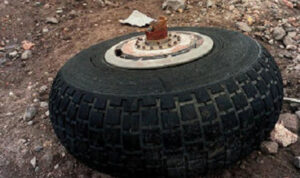 mountains, they have suggested that strong winds may have brought down the craft in some other way. One of the pilots recalled that “we had all been warned not to enter cloud over the mountains as the turbulence and icing posed too great a threat.”
mountains, they have suggested that strong winds may have brought down the craft in some other way. One of the pilots recalled that “we had all been warned not to enter cloud over the mountains as the turbulence and icing posed too great a threat.”
A 2000 Argentine Air Force investigation cleared Captain Cook of any blame, concluding that the crash had resulted from “a heavy snowstorm” and “very cloudy weather,” as a result of which the crew “were unable to correct their positioning.” By 2002, the bodies of five of the eight British victims had been identified through DNA testing.
 As World War II was winding down, and it was becoming abundantly clear that Nazi Germany was not going to win, the “brave” leaders of the Third Reich began to make plans to run out on their Army, leaving them to take the fall alone. The Nazi leaders were given aliases, and plans were made to get them to Argentina, a country known for its lax immigration policies. The Nazis planned to regroup in Argentina and try for world domination again at a later date.
As World War II was winding down, and it was becoming abundantly clear that Nazi Germany was not going to win, the “brave” leaders of the Third Reich began to make plans to run out on their Army, leaving them to take the fall alone. The Nazi leaders were given aliases, and plans were made to get them to Argentina, a country known for its lax immigration policies. The Nazis planned to regroup in Argentina and try for world domination again at a later date.
Hitler’s hatred for Jews, like any racism was not logical. The Jewish people had done nothing to Hitler or any other German person. This was just a sick personal idea of Hitler’s. It comes from an intolerance to the differences that are naturally occurring in humans, and why would we want to all look the same anyway. It makes no sense at all. Different people have different things to contribute to any society, but Hitler could only see his own twisted idea of a perfect person…odd, when you consider the fact that Hitler would not have fit into his own mold of “perfect” at all. Hitler had a number of conditions that would have, by his own standards, have precipitated his death by the very people who enforced Hitler’s laws.
The man Hitler put in charge of his “final solution of the Jewish question,” Adolf Eichmann, was a man who’s racism and evil personality were quite likely equal to Hitler’s. I have no idea how anyone could plan the murder  of millions of people, of any race, without that person being evil itself. Eichmann was just that. He knew what he was doing, and he relished the idea of “being a god” over those people’s lives…choosing who lives and who dies. Most of us dislike jury duty, because we don’t want to make such decisions for fellow citizens, but Eichmann loved it…thrived on it.
of millions of people, of any race, without that person being evil itself. Eichmann was just that. He knew what he was doing, and he relished the idea of “being a god” over those people’s lives…choosing who lives and who dies. Most of us dislike jury duty, because we don’t want to make such decisions for fellow citizens, but Eichmann loved it…thrived on it.
Eichmann was born in Solingen, Germany, in 1906. Eichmann joined the Nazi’s elite SS (Schutzstaffel) organization in November 1932. The members of the SS came to have broad responsibilities in Nazi Germany, including policing, intelligence, and the enforcement of Adolf Hitler’s anti-Semitic policies. Eichmann was good at his job, and steadily rose in the SS hierarchy. When the Nazis annexed Austria in 1938, Eichmann was sent to Vienna, His mission…rid the city of Jews. He set up an efficient Jewish deportment center and in 1939 was sent to Prague on a similar mission. That year, Eichmann was appointed to the Jewish section of the SS central security office in Berlin. I don’t know how he could have looked himself in the mirror.
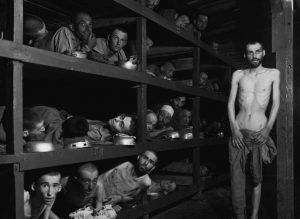 After the war, Eichmann was captured by US troops. Somehow, he managed to escape from the prison camp in 1946, before the Nuremberg International War Crimes Tribunal. Taking an assumed identity, Eichmann traveled between Europe and the Middle East. Finally, in 1950 Eichmann arrived in Argentina. In 1957, a German prosecutor secretly informed Israel that Eichmann was living in Argentina. Time had not forgiven the crimes Eichmann had committed. Agents from the Mossad, Israel’s intelligence service, were deployed to Argentina, and in early 1960 they finally located Eichmann. He was living in the San Fernando section of Buenos Aires under the name of Ricardo Klement. He was taken back to Israel, and on May 31, 1962, he was finally hanged for his horrific crimes against humanity.
After the war, Eichmann was captured by US troops. Somehow, he managed to escape from the prison camp in 1946, before the Nuremberg International War Crimes Tribunal. Taking an assumed identity, Eichmann traveled between Europe and the Middle East. Finally, in 1950 Eichmann arrived in Argentina. In 1957, a German prosecutor secretly informed Israel that Eichmann was living in Argentina. Time had not forgiven the crimes Eichmann had committed. Agents from the Mossad, Israel’s intelligence service, were deployed to Argentina, and in early 1960 they finally located Eichmann. He was living in the San Fernando section of Buenos Aires under the name of Ricardo Klement. He was taken back to Israel, and on May 31, 1962, he was finally hanged for his horrific crimes against humanity.

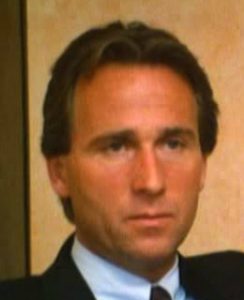 Rolf Mengele was born in March 16, 1944 in Freiburg, Germany to Irene Schoenbein and Dr Joseph Mengele…also known as the Angel of Death, but his father went into hiding after the war, and escaped to Argentina in 1949. Because of this, Rolf grew up in a loving home with his grandparents and his mother. He didn’t meet his father until he was a teenager, because he was told that he was dead.
Rolf Mengele was born in March 16, 1944 in Freiburg, Germany to Irene Schoenbein and Dr Joseph Mengele…also known as the Angel of Death, but his father went into hiding after the war, and escaped to Argentina in 1949. Because of this, Rolf grew up in a loving home with his grandparents and his mother. He didn’t meet his father until he was a teenager, because he was told that he was dead.
When he turned 16, Rolf learned that his father was actually alive when Joseph made contact with him. It was an unhappy revelation for him. His father made attempts to bond with him through letters, even writing and illustrating a children’s book for him, but to no avail. His father’s attempts didn’t stop the feelings of disgust he felt about his father’s beliefs and actions. Still, at 16, he felt a curiosity about his dad, and wanted to meet him. Since Joseph Mengele was still wanted by Nazi-Hunters, for his war crimes, it took Rolf 5 years to arrange a trip to Brazil to visit his father.
Rolf had to travel under a stolen passport, but he wanted to go, because he wanted to understand how his father could have been an active participant in the Nazi death machine. He didn’t wait long, after his arrival, to bring up the subject of Auschwitz. His dad immediately became defensive, denying any responsibility for the atrocities, but actually admitting to participating in the nightmare “experiments” that the Jewish people were subjected to. He acted like he was doing them a favor, saying, “What was I supposed to do with those people? They were sick and half-dead when thy arrived.” He tried to tell his son that all he was doing was to determine who was fit to work. He actually claimed to have saved several thousand people by allowing them to work.
After his visit, Rolf found it “impossible to betray his father’ location,” but his feelings of disgust remained with him for the rest of his father’s life. Rolf says, “I didn’t even bother to listen to him or think of his ideas. I simply rejected everything he presented. I will never understand how human beings  could do those things. That my father was one of them doesn’t change my opinion.”
could do those things. That my father was one of them doesn’t change my opinion.”
Joseph Mengele’s health began to deteriorate in 1972. In 1976 he suffered a stroke. Then on February 7, 1979, he had another stroke while swimming in the Atlantic Ocean off of Bertioga, Brazil during a visit with friends. He drown and was buried under the alias of Wolfgang Gerhard, which he had been using since 1971. Rolf abandoned the Mengele name in 1980, taking his wife’s last name to spare his children the burden of their grandfather’s past. Rolf and his family live in Freiburg, Germany, where he is an attorney.
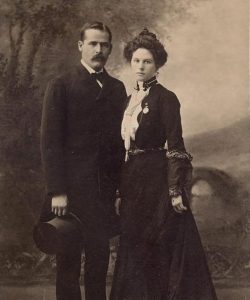 Over the years, many have speculated about the validity of the death of famous people, among them, Elvis Presley. For some unknown reason, people just cant believe, for whatever reason, that someone famous is dead. Butch Cassidy and the Sundance Kid were legendary outlaws who robbed trains, payroll couriers, and banks. When the law got too close to them, they took off for Bolivia. It wasn’t a plan that fared well…or was it? Robert Leroy Parker was born April 13, 1866, in Beaver, Utah. As a bandit, he used the alias Butch Cassidy. Harry Alonzo Longabaugh born in Mont Clare, Pennsylvania in 1867, was better known as Butch Cassidy’s sidekick and partner in crime, the Sundance Kid. The two of them had an illustrious criminal career, but as with all criminal careers, at some point mistakes are made, or they meet their match in a lawman who bests them, with a gun or their abilities as a detective. A part of the Wild Bunch, the careers of Butch Cassidy and the Sundance Kid were shrouded in mystery, but that mystery pales by comparison to their deaths. After making their escape to Argentina, and then to Bolivia, Cassidy, the Kid, and girlfriend, Etta Place thought that the small town of San Vicente would be an easy target for their crimes.
Over the years, many have speculated about the validity of the death of famous people, among them, Elvis Presley. For some unknown reason, people just cant believe, for whatever reason, that someone famous is dead. Butch Cassidy and the Sundance Kid were legendary outlaws who robbed trains, payroll couriers, and banks. When the law got too close to them, they took off for Bolivia. It wasn’t a plan that fared well…or was it? Robert Leroy Parker was born April 13, 1866, in Beaver, Utah. As a bandit, he used the alias Butch Cassidy. Harry Alonzo Longabaugh born in Mont Clare, Pennsylvania in 1867, was better known as Butch Cassidy’s sidekick and partner in crime, the Sundance Kid. The two of them had an illustrious criminal career, but as with all criminal careers, at some point mistakes are made, or they meet their match in a lawman who bests them, with a gun or their abilities as a detective. A part of the Wild Bunch, the careers of Butch Cassidy and the Sundance Kid were shrouded in mystery, but that mystery pales by comparison to their deaths. After making their escape to Argentina, and then to Bolivia, Cassidy, the Kid, and girlfriend, Etta Place thought that the small town of San Vicente would be an easy target for their crimes.
As courier for the Aramayo, Francke and Cia mining company, Carlos Pero was riding his mule up a rugged trail high in the Andes Mountains on the morning of November 4, 1908. He was completely unaware that his every move was being watched. Pero later said that after cresting a hill, he was “surprised by two Yankees, whose faces were covered with bandanas and whose rifles were cocked and ready to fire.” The pair of masked bandits robbed the courier of the company’s payroll and then disappeared into the desolation of southern Bolivia, but that was not to be the end of it. Three days later, four Bolivian officers cornered a pair of Americans suspected of being the bandits in a rented house, in the dusty village of San Vicente. The Pinkerton Detective Agency, which had long been trailing Butch Cassidy and the Sundance Kid, and had warned banks across South America to be on the lookout for them, because they had fled there from the United States in 1901. It was 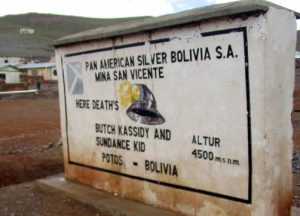 reported that the two Americans holed up in San Vicente were them. As a Bolivian soldier approached the hideout, the Americans shot him dead. A brief exchange of gunfire ensued. When it was over, San Vicente mayor Cleto Bellot reported hearing “three screams of desperation” followed by two gunshots from inside the house. When the Bolivian authorities cautiously entered the hideout the following morning, they found the bodies of the two foreigners.
reported that the two Americans holed up in San Vicente were them. As a Bolivian soldier approached the hideout, the Americans shot him dead. A brief exchange of gunfire ensued. When it was over, San Vicente mayor Cleto Bellot reported hearing “three screams of desperation” followed by two gunshots from inside the house. When the Bolivian authorities cautiously entered the hideout the following morning, they found the bodies of the two foreigners.
For decades, Daniel Buck and Anne Meadows, husband and wife researchers scoured South American archives and police reports trying to track down the true story of what happened to Butch Cassidy and the Sundance Kid, a saga that Meadows detailed in her book “Digging up Butch and Sundance.” While the paper trail pointed to their deaths in Bolivia, conclusive evidence as to the identities of the bandits killed in San Vicente in November 1908 rested under the ground of the village’s cemetery. The researchers enlisted the help of Clyde Snow, the renowned forensic anthropologist who had conclusively identified the remains of Nazi war criminal Josef Mengele. They received permission from Bolivian authorities to exhume the robbers’ bodies. Guided to their purported grave by an elderly villager whose father had reportedly witnessed the shootout, they opened the graves in 1991. Inside they found a skeleton of one man, and a piece of a skull from another. After a detailed forensic analysis and a comparison of DNA to the relatives of Cassidy and Longabaugh, Snow found there was no match. The skeleton was instead likely to have been that of a German miner named Gustav Zimmer who had worked in the area. It’s possible that the bodies of the iconic outlaws remain buried elsewhere in the San Vicente cemetery or even elsewhere in the country, but with no conclusive proof as to the whereabouts of the bodies of Butch Cassidy and the Sundance Kid, their ultimate fate remains a mystery.
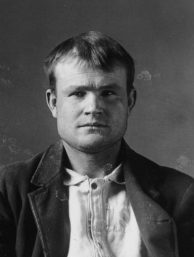
With no conclusive evidence to confirm the deaths of Butch Cassidy and the Sundance Kid, the rumors flew, that the pair had once again eluded the long arm of the law, and sightings of the duo in South America, Mexico and the United States continued for decades to come. Family members fueled the stories by insisting that the men had never been killed and instead returned to the United States to live into old age. Cassidy’s sister, Lula Parker Betenson, wrote in her 1975 book “Butch Cassidy, My Brother” that the outlaw had returned to the family ranch in Circleville, Utah, in 1925 to visit his ailing father and attend a family wedding. According to Betenson, Cassidy told the family that a friend of his had planted the story that one of the men killed in Bolivia was him so that he would no longer be pursued. She claimed that Cassidy lived in the state of Washington under an alias until his death in 1937. Betenson said her brother was buried in an unmarked grave in a location that was kept a family secret.

